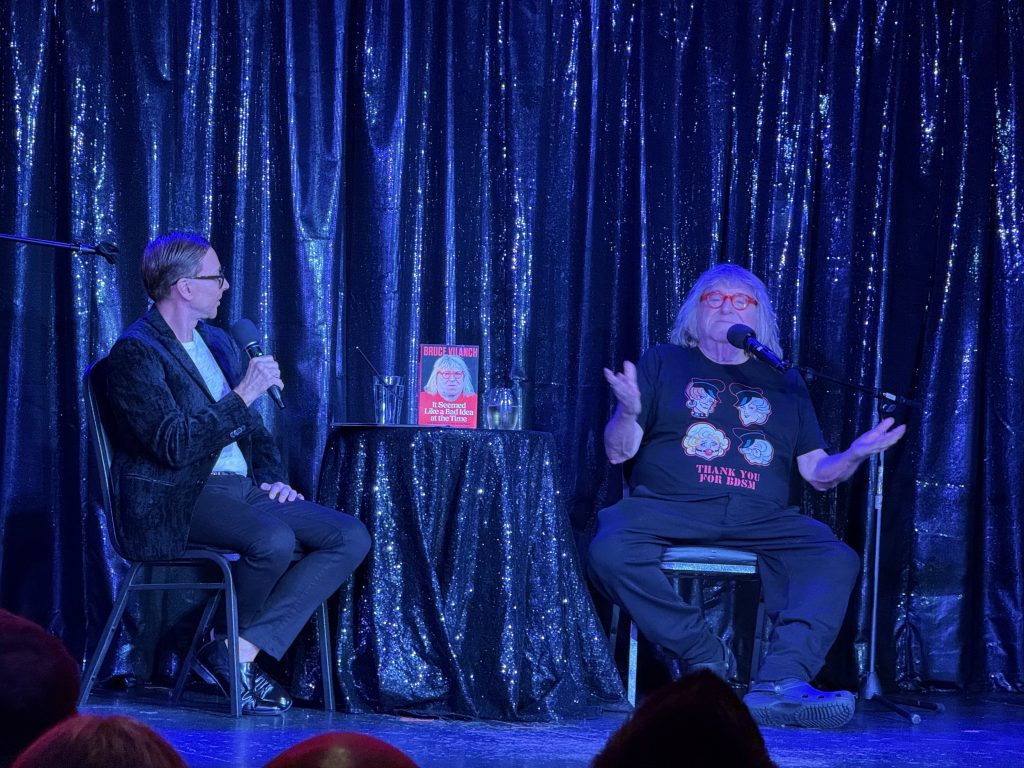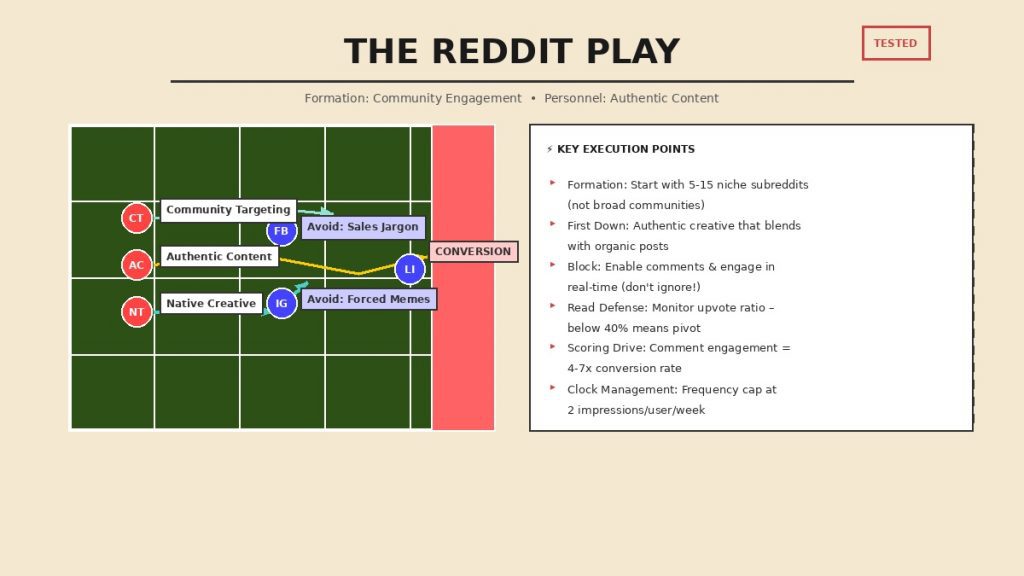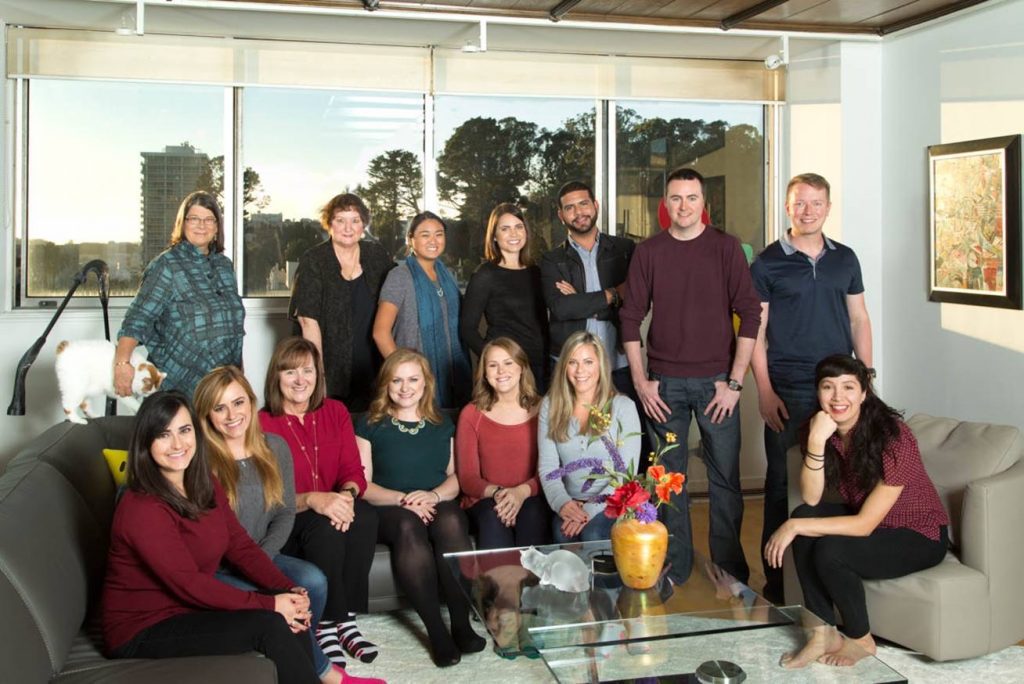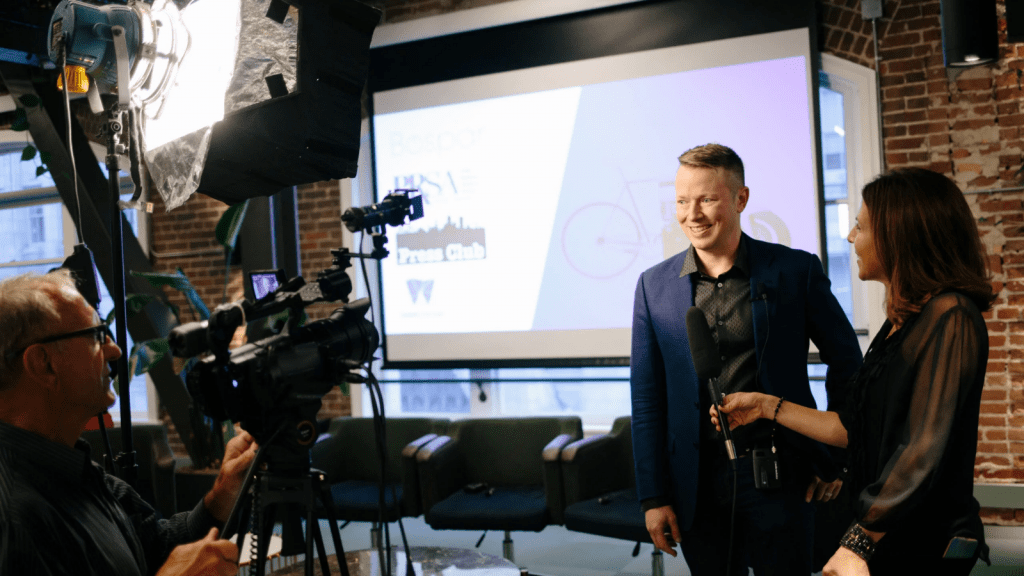The man sitting across from me at Club Oasis had shaped American entertainment for decades. Bruce Vilanch, the comedy writing legend who put words in Cher’s mouth, crafted the variety specials that made the Osmonds household names, co-wrote 25 Academy Award shows, and yes, wrote the infamous Star Wars Holiday Special, was signing copies of his latest book.
When I mentioned that I’d also written a book, he asked about it with genuine interest. After hearing about “Game Face: Becoming a PR Detective,” he grabbed my copy and inscribed it: “Curtis for the Win! Great Game Face!”
But here’s what made our conversation so fascinating: we weren’t talking about his successes. We were talking about his failures.
Vilanch’s new memoir, “It Seemed Like a Bad Idea at the Time: The Worst TV Shows in History and Other Things I Wrote,” chronicles his work on some of television’s most legendary disasters. The Star Wars Holiday Special, The Paul Lynde Halloween Special, Rob Lowe dancing with Snow White at the Oscars, and The Brady Bunch Variety Hour. Projects that seemed doomed from conception but somehow became cultural touchstones decades later.
As someone who recently took my own creative risk by publishing “Game Face,” the first children’s book about public relations, I found myself riveted by Vilanch’s philosophy on creative risk-taking and what it means for those of us trying to break through the noise in tech marketing.
The Master of Authentic Personality at Scale
Vilanch didn’t just write jokes. He architected the public personalities of some of America’s biggest stars. He understood something that many tech marketers struggle with today: Audiences don’t just want to be entertained, they want to connect with something that feels genuine, even when it’s being broadcast to millions.
This was exactly the kind of authentic storytelling he’d been doing for decades, finding the unexpected truth that makes a brand memorable. In “Game Face,” the best part of the story is where we discover that the bug in a client’s video game is really the game’s best feature. There’s a lot of discovery that makes good PR great, and Vilanch had mastered this long before any of us were thinking about brand storytelling.

When I was developing “Game Face,” I faced a similar challenge. How do you explain a complex profession like PR in a way that feels authentic to both kids and adults? The solution came from embracing the real messiness of what we do: the problem-solving, the detective work, the moments when what looks like a crisis becomes an opportunity.
The Power of Saying Yes to “Bad Ideas”
“Nothing ever happens if you don’t say yes, even if it seems like a bad idea at the time,” Vilanch writes in his memoir. This philosophy has defined his entire career, leading him to work on projects that industry veterans warned him against.
I thought about my own “bad idea” moment. When my niece Sloan asked me what I did for a living, I realized there weren’t any books to help explain PR to kids. My initial reaction was to find someone else’s book to give her.
When that search came up empty, I had a choice: let it go or publish the book that didn’t exist.
The logical response would have been to let it go. I’m not a children’s book author. I run a health and tech PR and marketing firm. I don’t know the first thing about publishing or illustration!
But I said yes anyway.
The result was “Game Face,” which Bospar published as part of our ten-year anniversary celebration. The book tells the story of Sloan helping solve a PR crisis when her favorite video game glitches worldwide, learning firsthand how PR professionals overcome challenges.
Your Disasters Might Be Your Greatest Assets
What struck me most about Vilanch’s career is how his most mocked work became his most beloved. The Star Wars Holiday Special, widely considered the worst TV show ever made, is now a cult classic with millions of YouTube views. The Paul Lynde Halloween Special, once derided as unwatchable, is now celebrated as campily brilliant.
This lesson hit home as I navigated the unexpected challenges of promoting “Game Face.” Publishing a children’s book about PR meant entering unfamiliar territory. Book marketing is completely different from tech PR. I made mistakes, fumbled through book signings, and learned that explaining PR to parents is almost as challenging as explaining it to kids.
But those “failures” became the book’s greatest strengths. Parents connected with the honesty about not knowing how to explain our profession. Kids loved the authentic detective story that didn’t talk down to them. The book’s imperfections made it more relatable, not less.
The proof came six months later when Bospar commissioned research to measure our 10th anniversary campaign’s impact. The results validated our “bad idea” in ways we never expected: 83% of marketing executives in the Bay Area were aware of “Game Face,” 88% said they were excited to read it, and 87% believed a children’s book about creative careers was valuable or extremely valuable. The campaign generated over 2.3 billion media impressions and coverage in outlets from Forbes to AP News.
What seemed like a risky side project had become a legitimate business asset.
Filling the Gaps Others Won’t Touch
Vilanch made his career writing for “impossible” variety shows that other writers wouldn’t touch. Similarly, when I discovered that parents and kids knew almost nothing about PR as a profession, I realized we’d found an untapped opportunity.
A Bospar-commissioned survey revealed that PR is often considered a “hidden profession.” When I was growing up, children’s books focused on astronauts, doctors, teachers, and firefighters. Today, those options haven’t changed much, despite the explosion of new career paths in technology, communications, and digital media.
“For the next generation, PR should be intoxicating,” I realized during the interview process for the book. “How many American kids like to think imaginatively about writing and video, and the ways in which we communicate?”
The lesson for tech marketers is clear: there are gaps everywhere if you’re willing to look for them. What conversations aren’t happening in your industry? What stories aren’t being told? What audiences are being overlooked?
The Authentic Voice Advantage
Rather than hire a “real” children’s author, I chose to publish a book that came from the heart about what I actually do every day. I drew from real client situations (carefully anonymized), real problem-solving processes, and real moments of discovery that make our work exciting.
This authentic voice resonated in ways I didn’t expect. Bospar team members saw their work reflected accurately. Clients recognized the thoughtful process behind campaign development. Kids connected with a protagonist who used real detective skills to solve meaningful problems.
Vilanch’s work endures for the same reason: it was genuine, even when it was gloriously messy. In an industry obsessed with polished messaging, the brands that dare to show real personality, including their imperfections, create deeper connections.
The Takeaway for Tech Marketers
Meeting Bruce Vilanch reminded me that the best marketing often comes from the ideas that seem impossible at first. Whether you’re crafting a brand voice for a tech startup or launching a product that doesn’t fit existing categories, the principles remain the same:
- Say yes to the projects that scare you a little
- Fill the gaps that others won’t touch
- Embrace your authentic voice, even when it’s imperfect
- And remember that your greatest “disasters” might become your most valuable assets.
Sometimes the industry needs someone crazy enough to create what doesn’t exist yet.
Thanks to Mark Rhoades for hosting an incredible evening at Club Oasis and making it a fundraiser for the Richmond/Ermet Aid Foundation.
And thanks to Bruce Vilanch for proving that taking creative risks, even the ones that seem like bad ideas at the time, is often exactly what the world needs.




